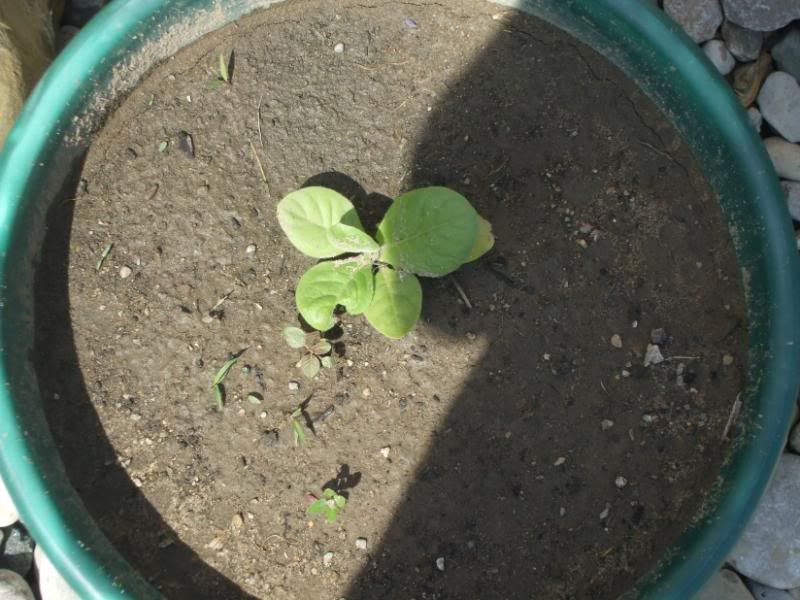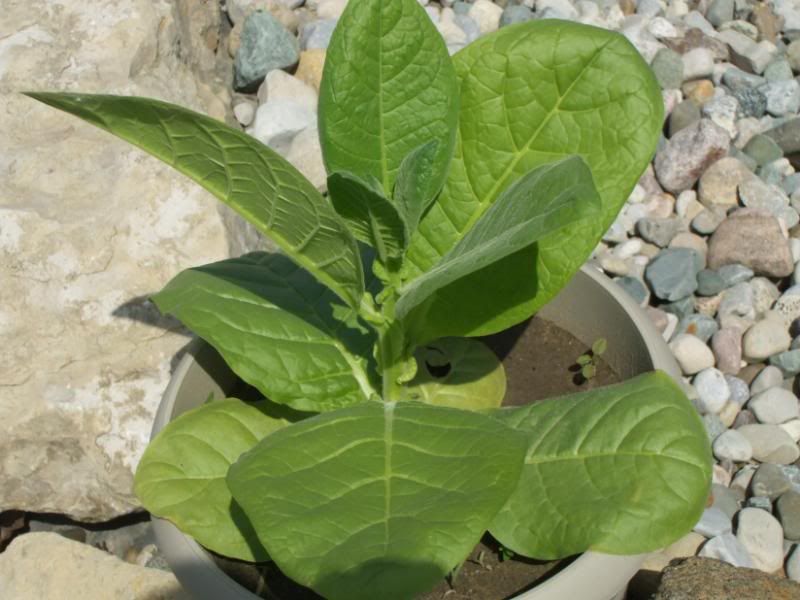
Nicotiana tabacum is the most commonly used species of nicotiana to grow commercial tobacco for cigarettes, cigars, pipe tobacco, as well as chews and snuffs. N. rustica is much more potent but has recently caught some attention within the modern entheogen community. The seeds are extremely small, often the size of a grain of sand. The species, N. tabacum comes in a large amount of different varieties that are grown for the different particular products to later produce. Certain types favor cigar preparation but are horrid for pipe tobacco and so on.
To grow tobacco plants is a task that requires a bit of work and patience. However they are quite rewarding in a number of ways. To start, tobacco plants should be planted indoors in late March or early April. The seeds are sown on top of the soil. As the seedlings mature and get to a decent size (1 inch or so) the grower will need to cut surrounding weaklings that are too close to grow to other tobacco plants. Once the last chance of frost has past the plants can begin being acclimated to the outdoor weather. To do this one must place them in small peat pots or small containers outside. This can be done by placing them for several hours outdoors, for a few hours as the sun is going down and returning them at night. It can also be the same way just in the morning until the strongest point of the sun comes up and returning them indoors. In both situations the tobacco seedlings must be watched and placed in a partial sunlight position. They must also be lightly watered during this time in an easy draining container. Misting is not recommended as the seedlings are very fragile and the condition of the leaves is crucial on these small plants. Some advise the seedlings should be acclimated outdoors at nightfall but I have not had any luck with this at all and risk them being stunned at low temperatures.

After a couple of weeks of doing this the seedlings will be above a couple of inches in size and will be ready to be placed in the soil. Tobacco can be grown in containers but I do not recommend it as they will be dramatically smaller in size. Placing them in the ground should be done in the late afternoon or evening and they should be watered immediately after being placed in the ground. Take account for where they are planted as tobacco will deplete the nutrients in the soil considerably. Spacing is a personal choice as many sources have different preferences based on the particular variety as some will be bushier while others will grow taller and more slim. Generally a foot and a half is the minimum. It is advised to pay attention to the plants the following day as they will need some watering during the suns hottest hours and will experience minor wilting for a couple of days afterward.

Now that the tobacco plants are established and in the ground they are ready to prosper. Arguably the hardest part of taking care of the tobacco plants is over. Now it is time to watch for diseases and pests as well as take care of the condition of the leaves and engaging 'suckers.' Aphids seem to be the most common problem seen as small black dots all over the leaves. Consult the correct pest killer or produce a mild detergent mix to spray on them. Diseases may occur specific to tobacco or to similar plants in the nightshade family. I have had no experience with diseases but have heard much fuss about growers problems with them. The seemingly most demanding aspect of growing tobacco involves the removal of suckers. If one is growing tobacco for display, the flowers, or the seeds this is nothing to worry about. However, if one is growing for quality tobacco leaves then removal of suckers is almost crucial. If growing for cured tobacco, the top of the plant must be removed when buds appear before the flowers form. Next offshoots will appear throughout the plant, removing these before they reach an inch will allow for far better quality as well as larger leaves. If this is done with a bi weekly use of diluted fertilizer similar to that used for tomatoes or potatoes the grower should see a great yield by the end of the season.

The process of removing the leaves, curing the tobacco, and preparing it for the end product is the topic of another post which will appear later in this blog. If anything is unclear please leave a comment or contact me on the forums I am active on. I do not have any tobacco seed yet to grow for the coming season so I am unable to trade at this point but should have some ready for sale on my online store in a month or so.

Hey there,
ReplyDeleteI just wanted to tell you that I find your blog really well-written, entertaining and informative! I subscribed to it, since I'm really interested in horticulture, especially of interesting plants such as these! I think you'd like my blog as well, so feel free to check it out, and contact me by e-mail!
--ioni
kaleidoscopeflux.blogspot.com
Thanks Lonatan!
ReplyDeleteI was sad to let this blog die but have teamed up with some folks at Turtle Island Botanicals to work on the writing of their blog. Check it out!
http://turtleislandbotanicals.blogspot.com/
I will be posting plenty of info and growing assistance! Thanks again for the support!